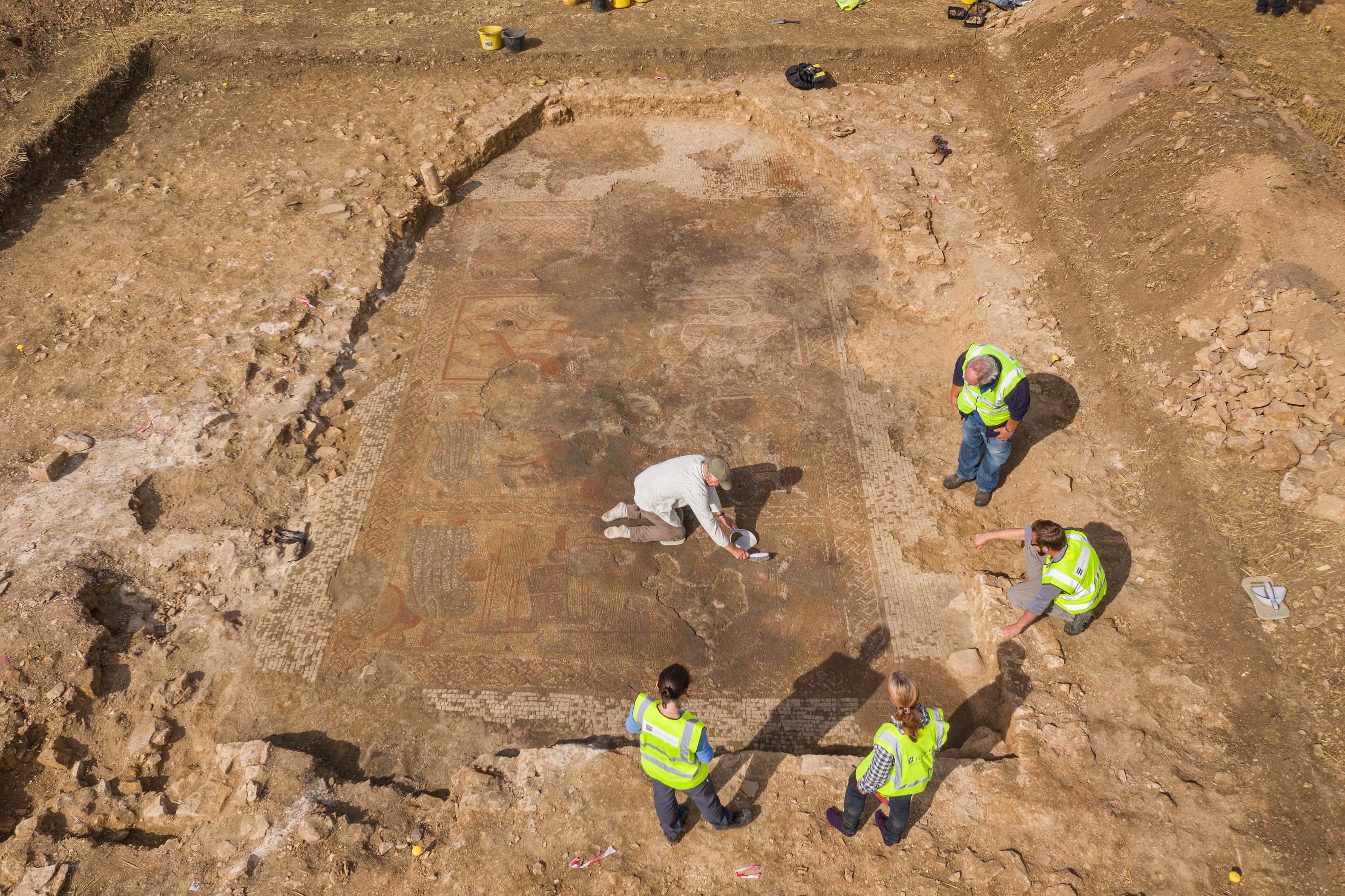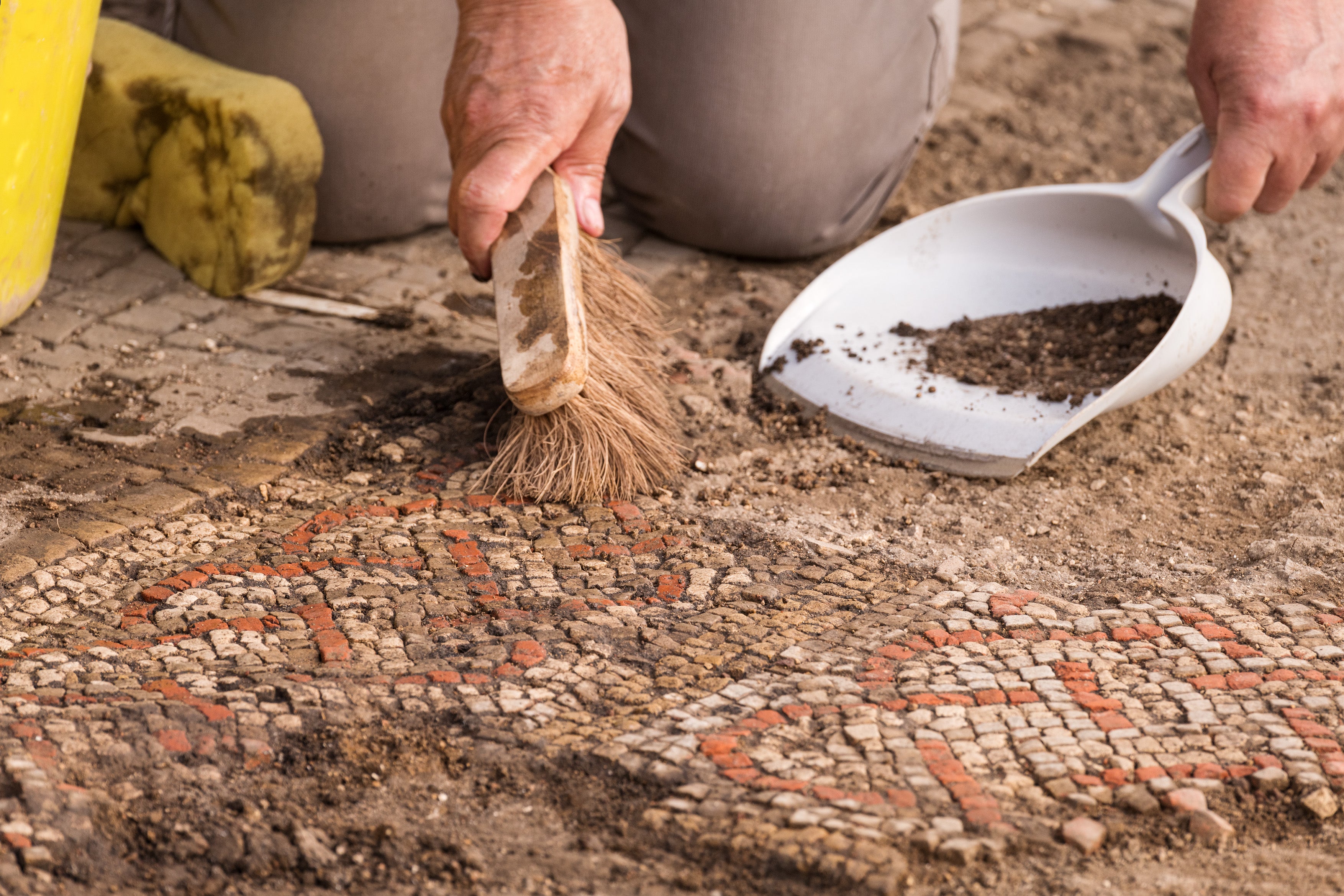‘Most exciting’ Roman mosaic in a century uncovered beneath English farm
The artwork represents scenes from the Iliad

Your support helps us to tell the story
From reproductive rights to climate change to Big Tech, The Independent is on the ground when the story is developing. Whether it's investigating the financials of Elon Musk's pro-Trump PAC or producing our latest documentary, 'The A Word', which shines a light on the American women fighting for reproductive rights, we know how important it is to parse out the facts from the messaging.
At such a critical moment in US history, we need reporters on the ground. Your donation allows us to keep sending journalists to speak to both sides of the story.
The Independent is trusted by Americans across the entire political spectrum. And unlike many other quality news outlets, we choose not to lock Americans out of our reporting and analysis with paywalls. We believe quality journalism should be available to everyone, paid for by those who can afford it.
Your support makes all the difference.Archaeologists have hailed the discovery of a late Roman mosaic beneath a field in Rutland as the “most exciting” find of its type in the UK for a century.
The artwork is the first in Britain to represent scenes from the Iliad, including the battle between the Greek hero Achilles and the Trojan prince Hector, which takes place towards the end of the epic poem.
In fact, only a handful of mosaics with similar representations have been uncovered across Europe.
Given how unusual the mosaic is, the Department for Digital, Media, Culture and Sport (DCMS) has – on the advice of Historic England – designated the artwork and the surrounding villa complex as an archaeological site of national significance.
The Rutland mosaic, which measures 11m by almost 7m, was initially found by Jim Irvine, the son of the landowner Brian Naylor.
Reflecting on the chance finding, Mr Irvine said: “A ramble through the fields with the family turned into an incredible discovery.”
After Historic England secured emergency excavation funding, preliminary investigations were made by the University of Leicester Archaeological Services (ULAS) in August last year.
The striking mosaic, which is presumed to be the centrepiece of a large dining area, was probably commissioned by a wealthy individual with a knowledge of classical literature.
Experts have dated the artwork to some time in the 3rd or 4th century AD, and believe that it was later reused and repurposed based on evidence of fire damage and cracks.

John Thomas, the deputy director of ULAS, who led the excavations, said: “This is certainly the most exciting Roman mosaic discovery in the UK in the last century.
“It gives us fresh perspectives on the attitudes of people at the time, their links to classical literature, and it also tells us an enormous amount about the individual who commissioned this piece.
“This is someone with a knowledge of the classics, who had the money to commission a piece of such detail, and it’s the very first depiction of these stories that we’ve ever found in Britain.”
Mr Thomas added that it was rare for a villa like the one in Rutland to be so well preserved in its entirety.
Meanwhile, Duncan Wilson, who runs Historic England, said: “By protecting this site we are able to continue learning from it, and look forward to what future excavations may teach us about the people who lived there over 1,500 years ago.”

Richard Clark, the county archaeologist for Leicestershire and Rutland, praised Mr Irvine and his family for their “prompt and responsible actions” in bringing it to the attention of the authorities.
“It has been a privilege to have been involved in the investigation and a pleasure to have worked with such a skilled group of amateurs and professionals,” he added.
The mosaic’s discovery will feature in the television programme Digging for Britain on BBC Two next year.
In the meantime, Historic England and Rutland County Council will try to find a site to display and to explain the finds from the villa. Further excavations are also due to take place early next year.
Join our commenting forum
Join thought-provoking conversations, follow other Independent readers and see their replies
Comments